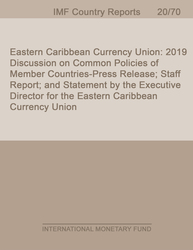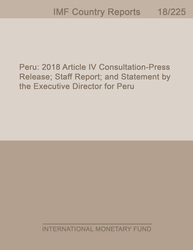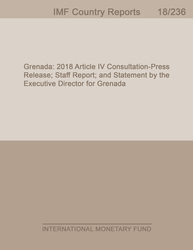
Eastern Caribbean Currency Union:2019 Discussion on Common Policies of Member Countries-Press Release; Staff Report; and Statement by the Executive Director for the Eastern Caribbean Currency Union
2019 Discussion on Common Policies of Member Countries-Press Release; Staff Report; and Statement by the Executive Director for the Eastern Caribbean Currency Union
READ MORE...
Volume/Issue:
Volume 2020
Issue 070
Publication date: March 2020
ISBN: 9781513536224
$18.00
Add to Cart by clicking price of the language and format you'd like to purchase
Available Languages and Formats
| English |
Prices in red indicate formats that are not yet available but are forthcoming.
Topics covered in this book
This title contains information about the following subjects.
Click on a subject if you would like to see other titles with the same subjects.
Banks and Banking , Finance , Public Finance , Taxation - General , Natural Disasters , ISCR , CR , authority , ECCB authority , e-government platform , ECCU price aggregate , article IV consultation discussion , ECCU region , ECCU country , ECCU work program , Digital currencies , Natural disasters , Tax incentives , Credit bureaus , Caribbean , Global
Also of interest
Summary
This paper presents IMF’s 2019 Discussion on Common Policies of Member Countries of the Eastern Caribbean Currency Union (ECCU). ECCU’s gross domestic product (GDP) growth accelerated from 3/4 percent in 2017 to 3 3/4 percent in 2018, reflecting buoyancy in the tourism sector, sizable Citizenship-by-Investment (CBI) inflows, and a recovery from the 2017 hurricanes in Anguilla and Dominica, which were supported by large public investments in reconstruction. Fiscal deficits increased in 2018–2019, but they have remained moderate. Efforts are needed to streamline, and re-balance tax incentives based on clear principles consistent with international best practices. External imbalances are sizable and significant financial sector vulnerabilities affect both banks and non-banks. Growth is projected to gradually moderate toward its long-term average of 2 1/4 percent as the cyclical momentum normalizes and CBI inflows ease. These trends would also contribute to wider fiscal deficits, ending the downward drift in public debt dynamics. The outlook is clouded by downside risks, including a possible intensification of natural disasters and financial sector weaknesses.
Copyright © 2010 - 2025
Powered by:
AIDC



